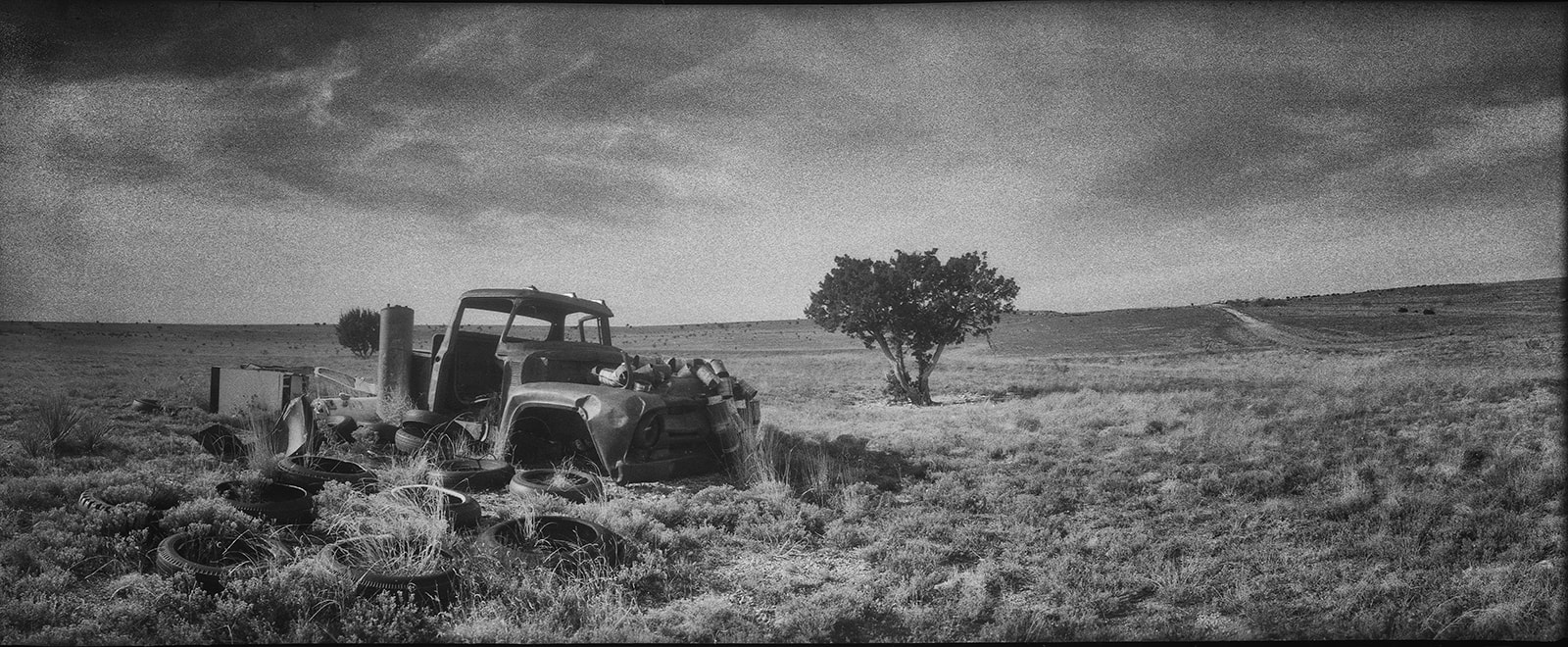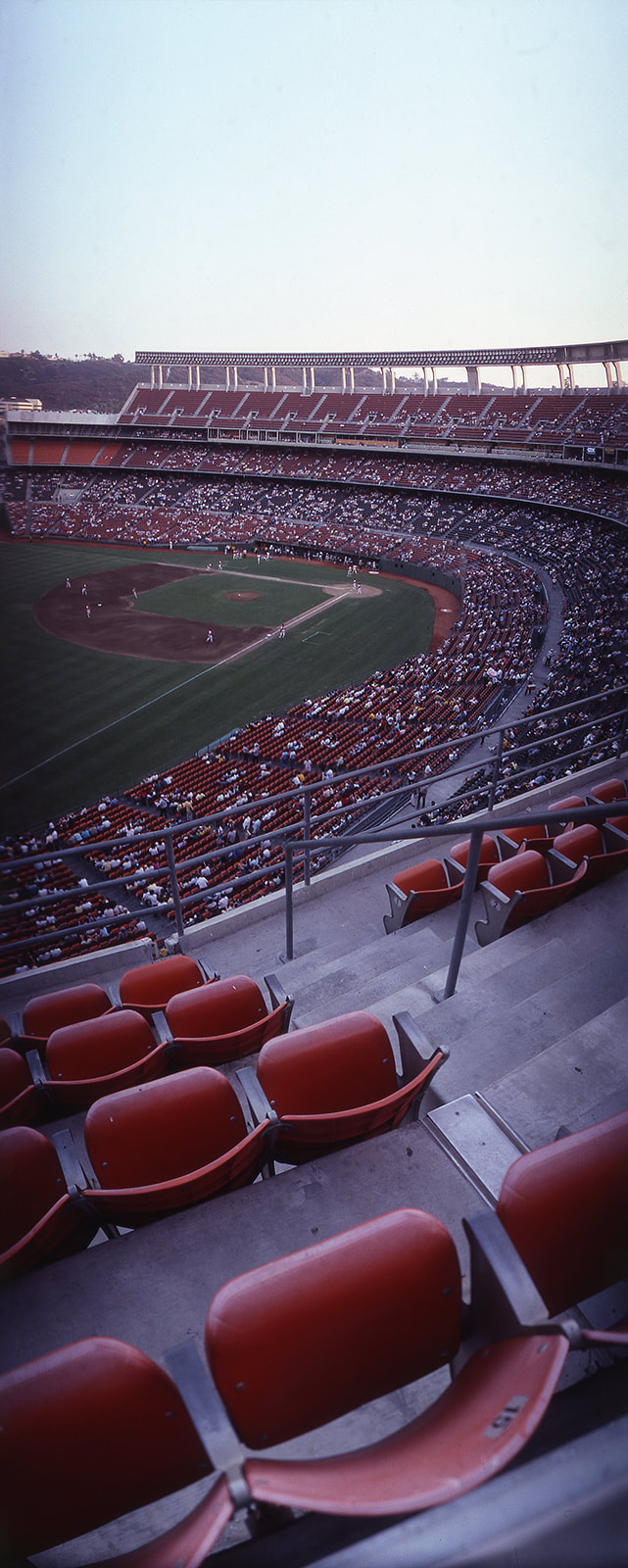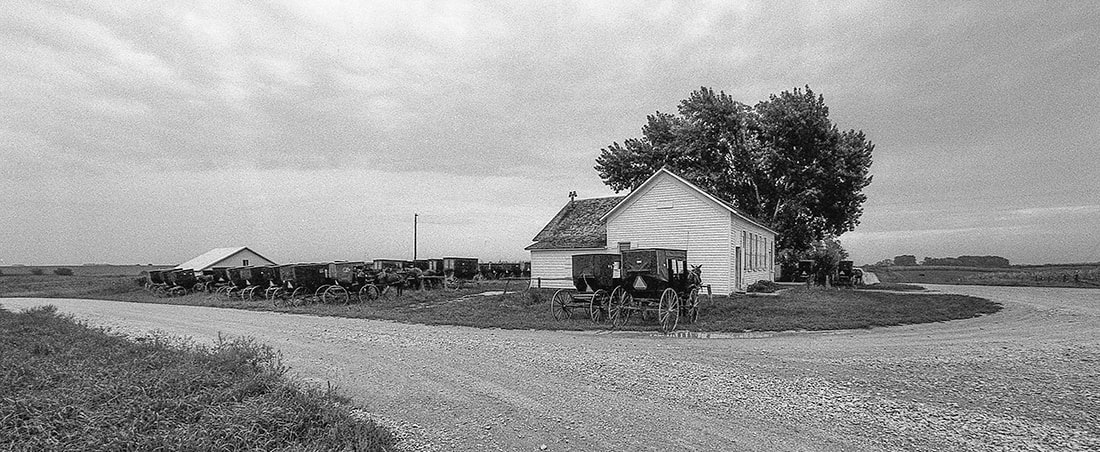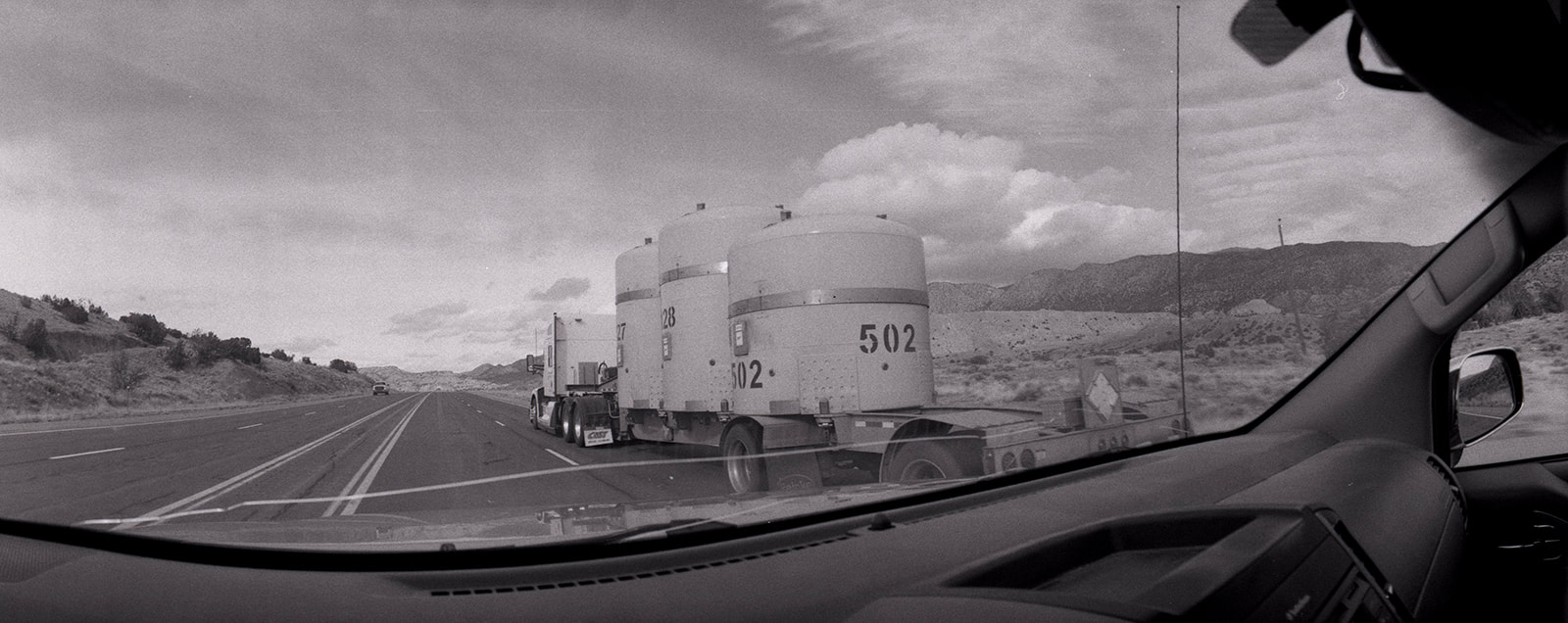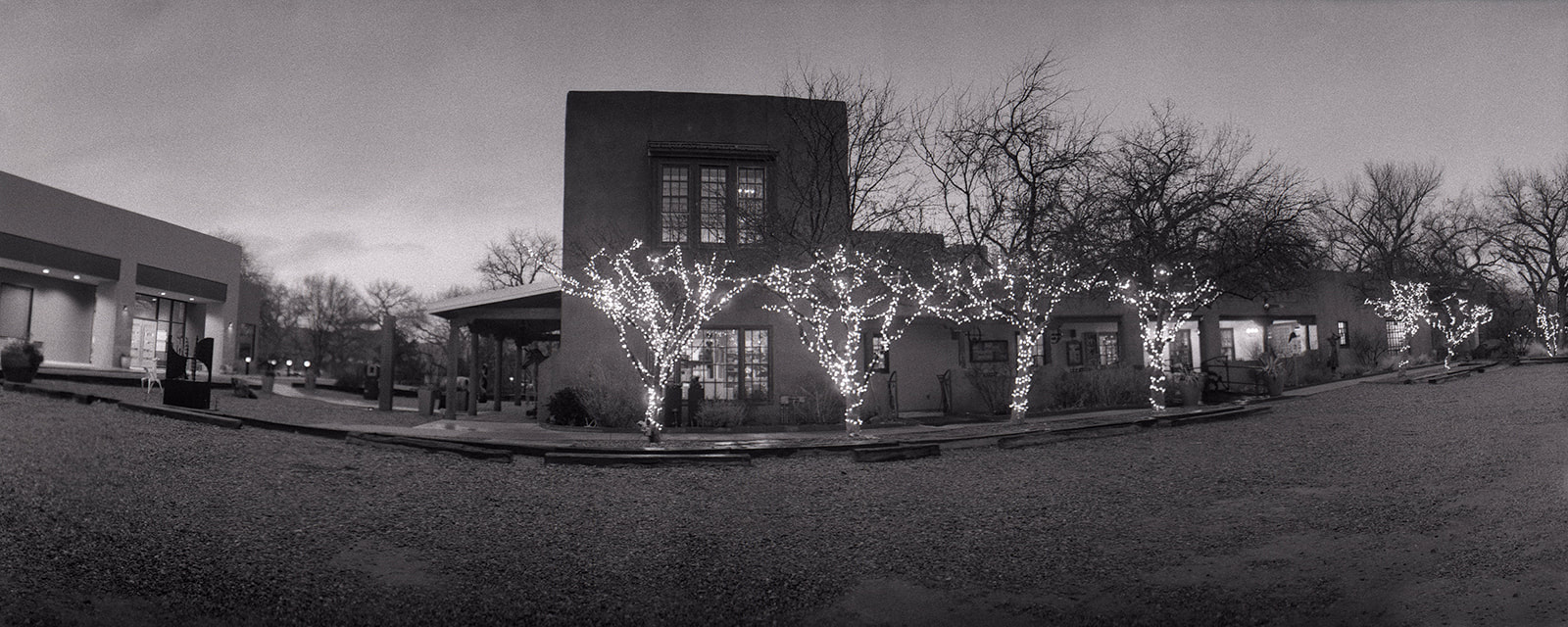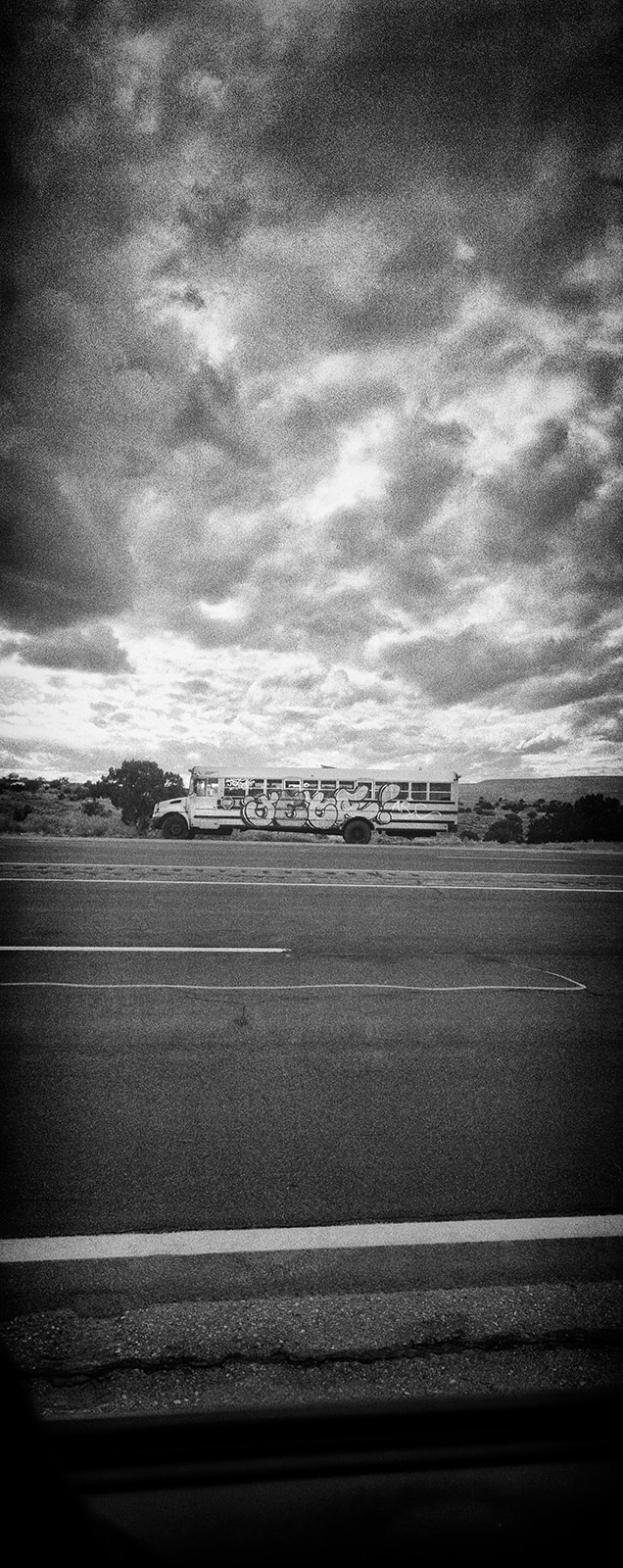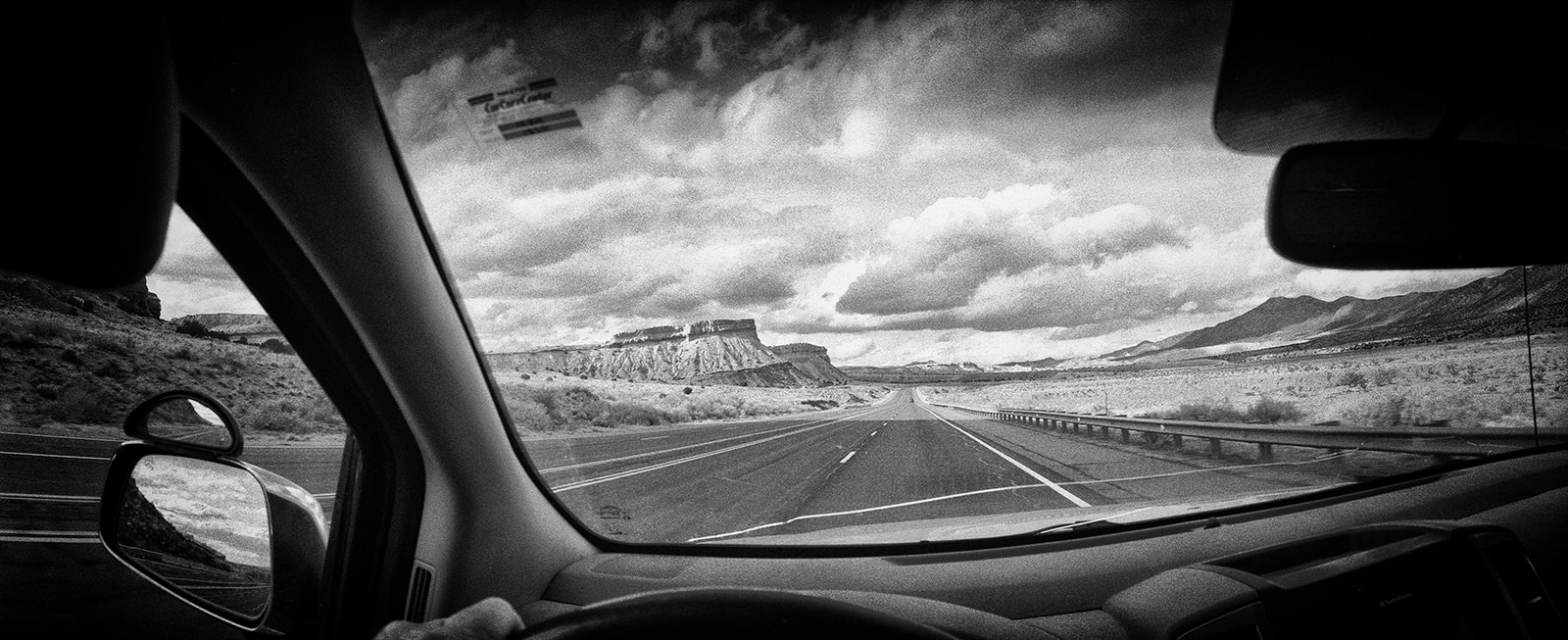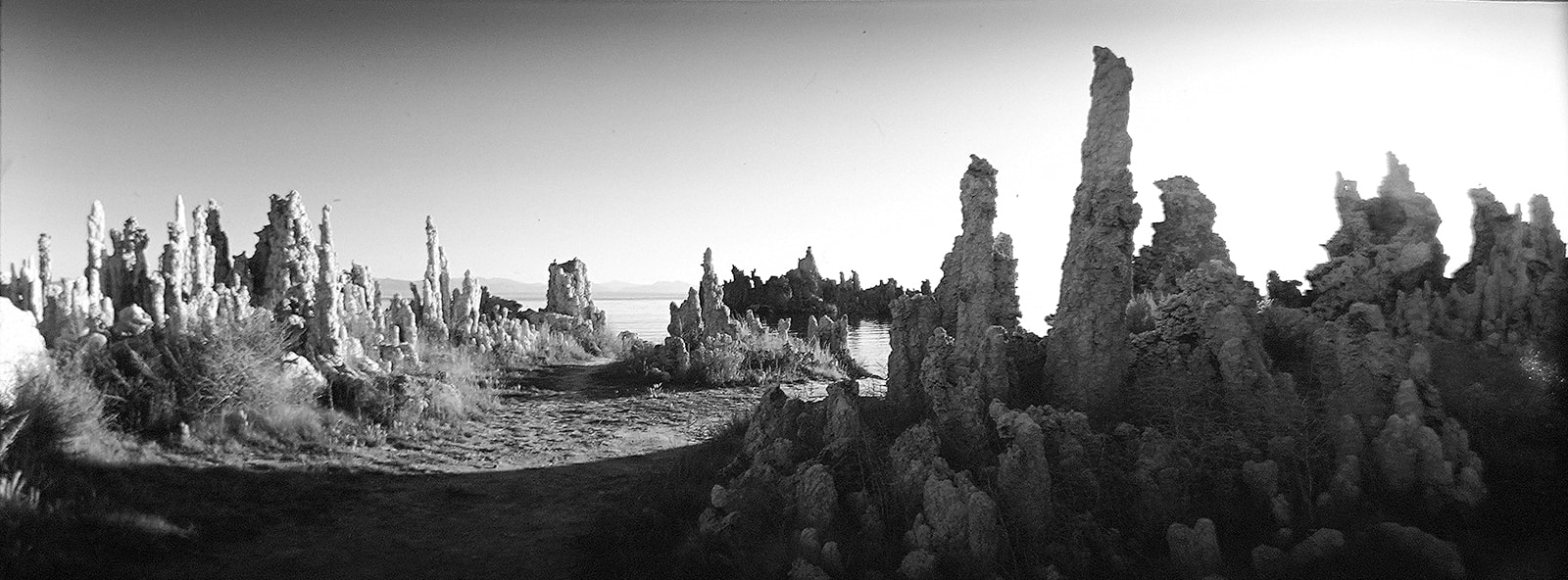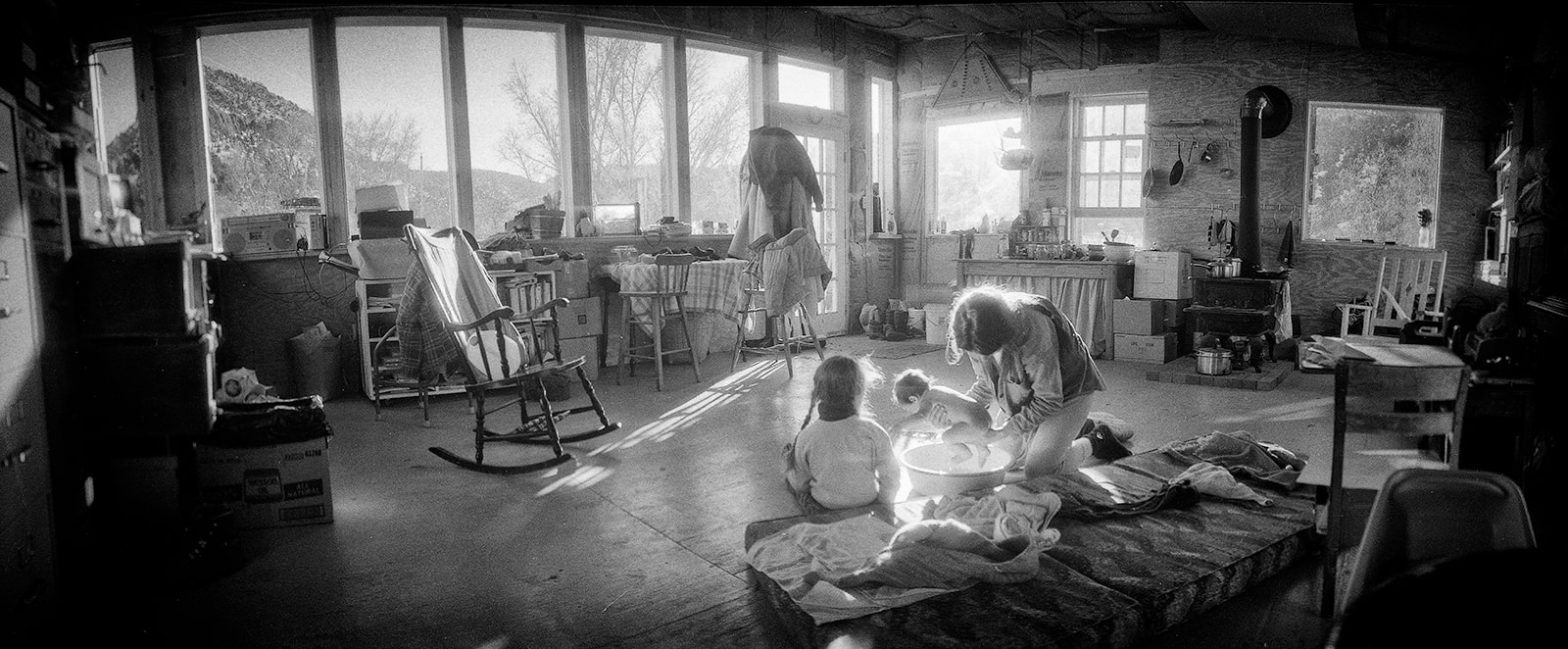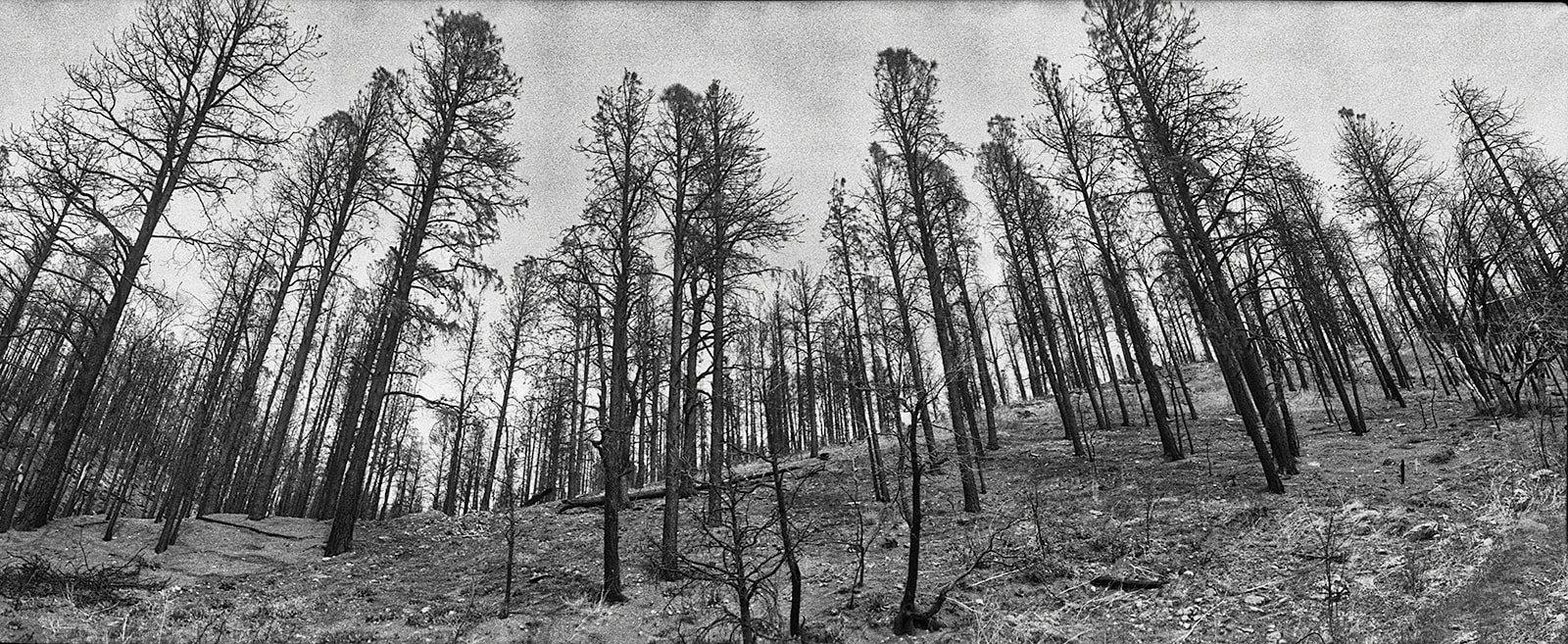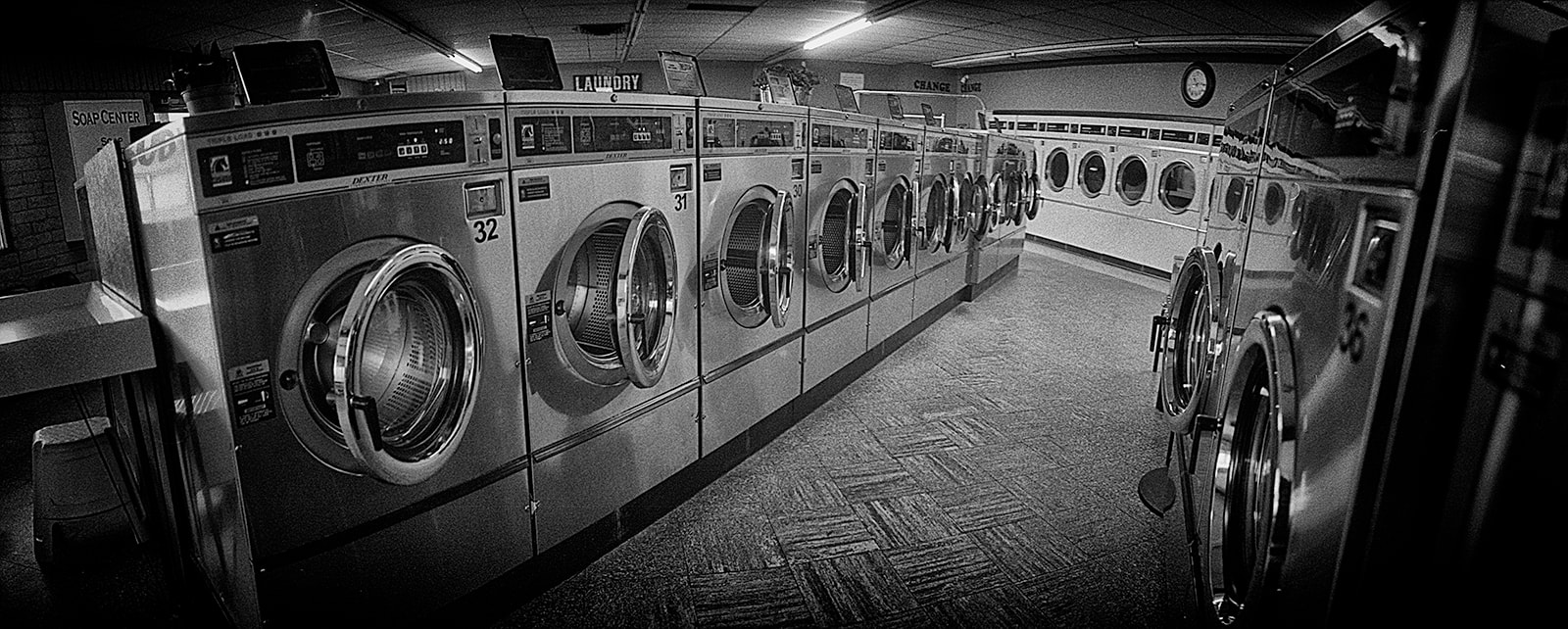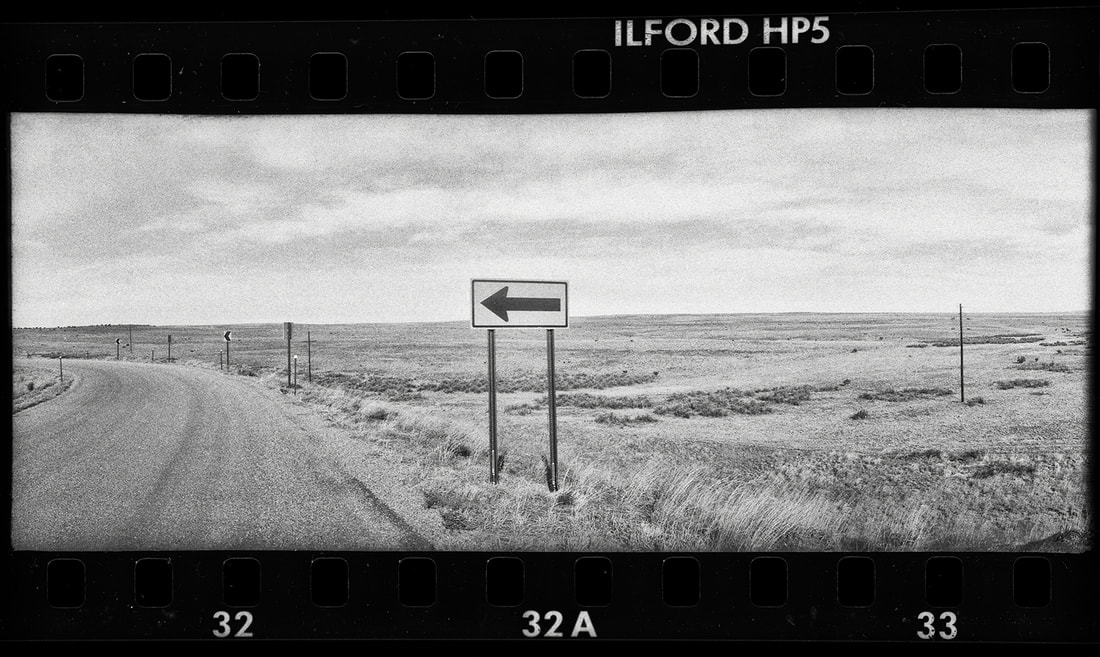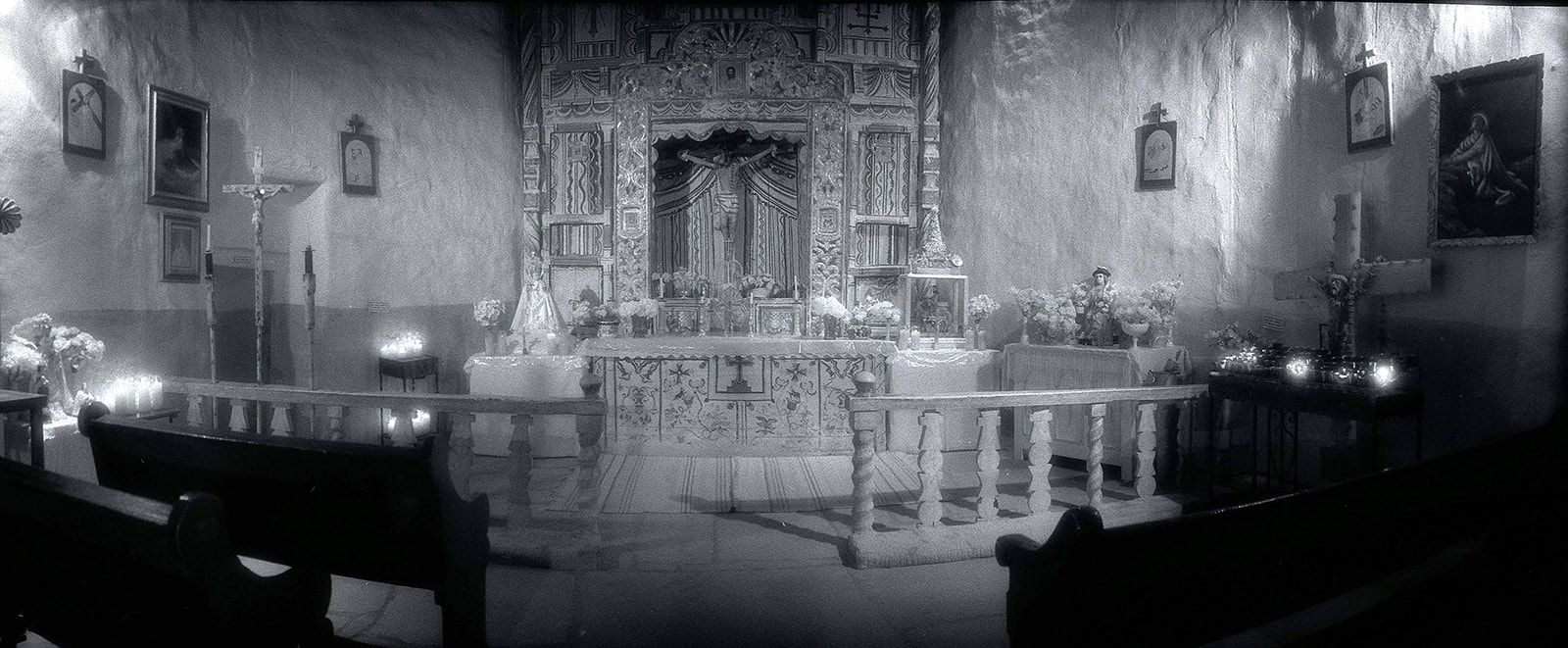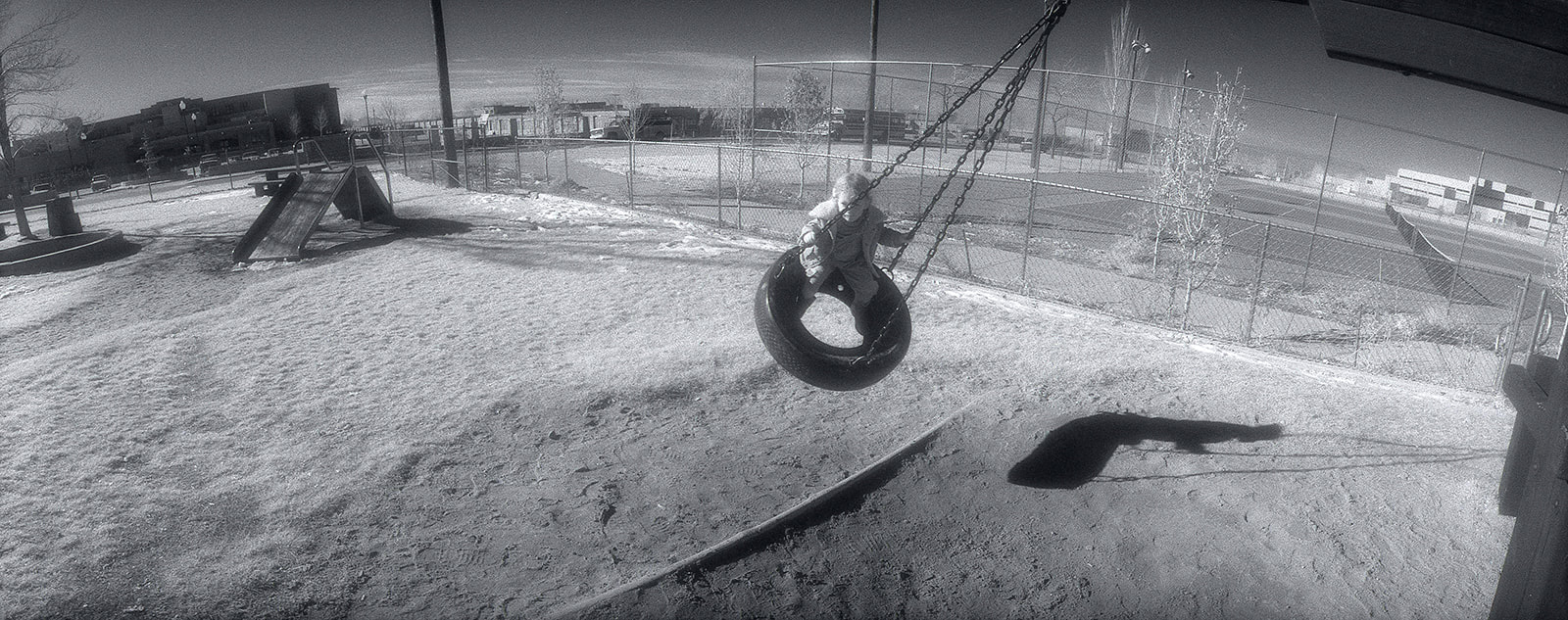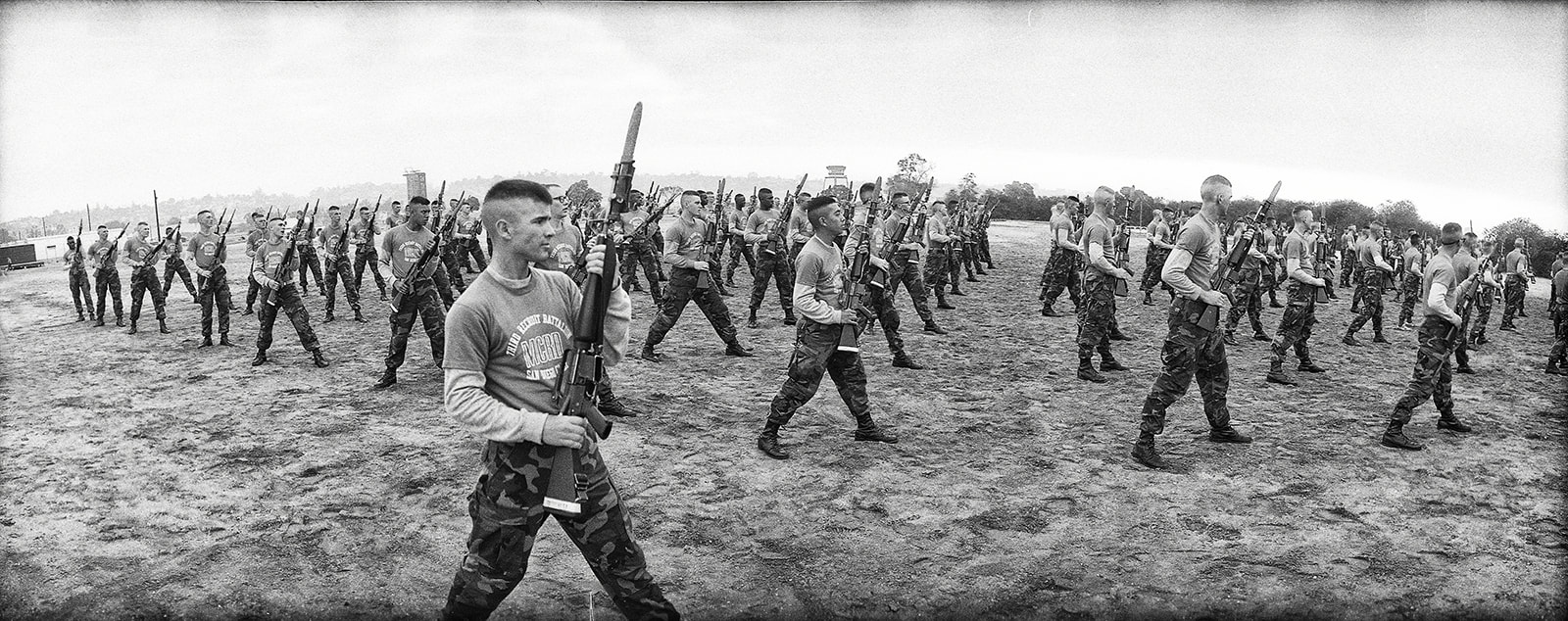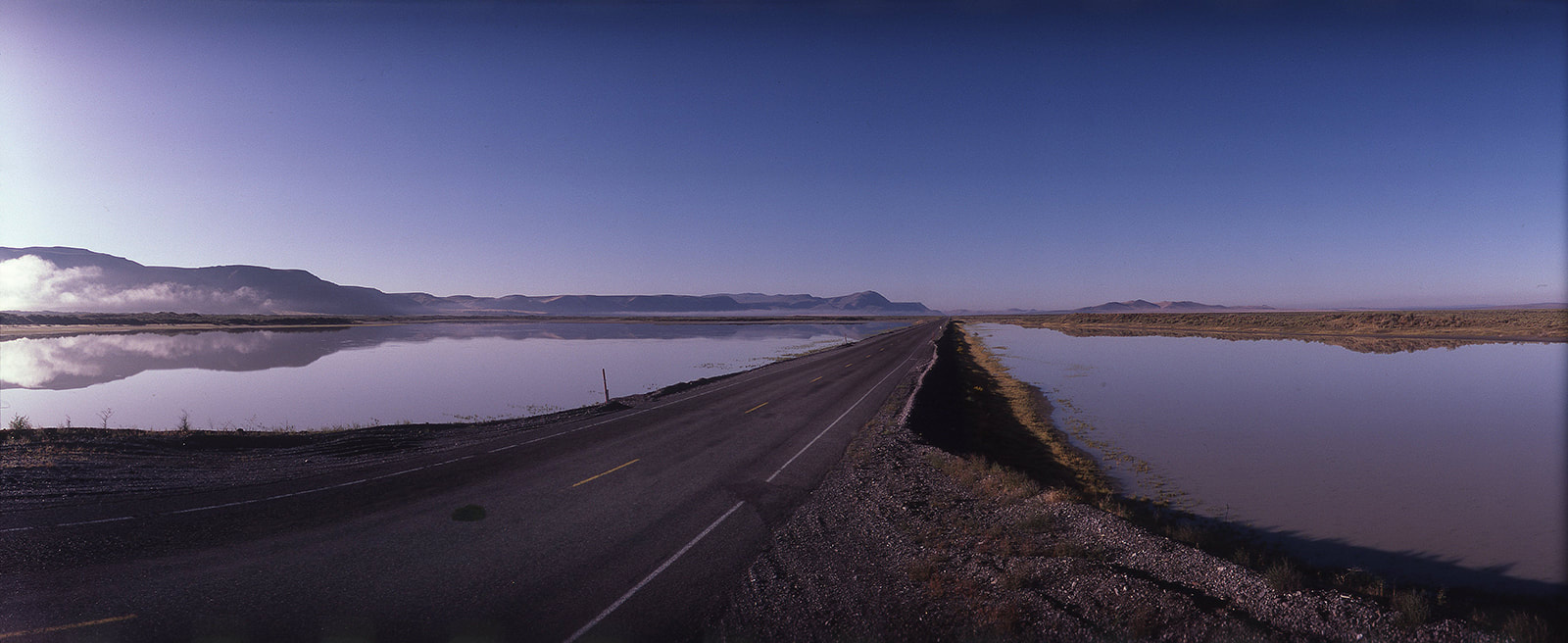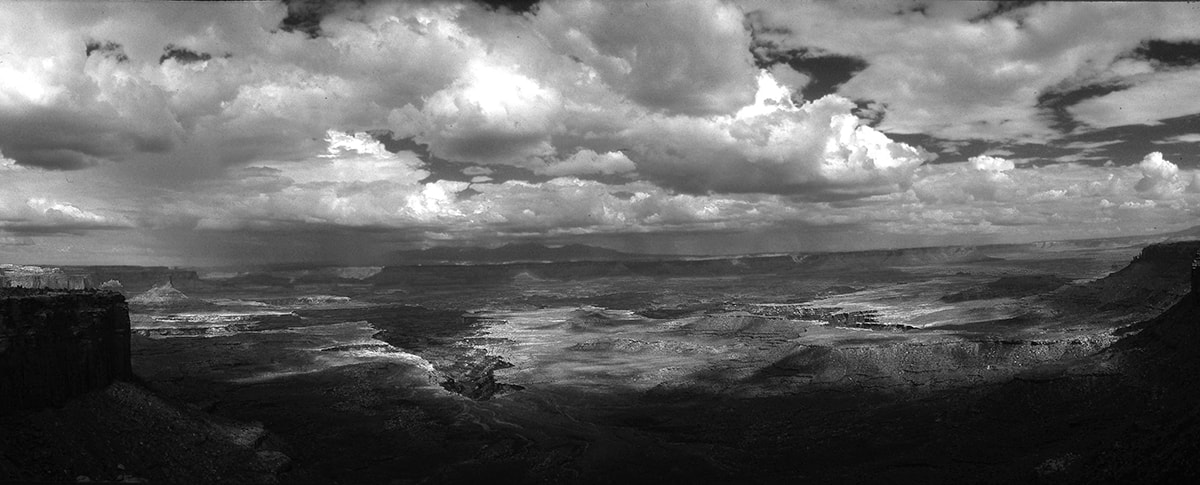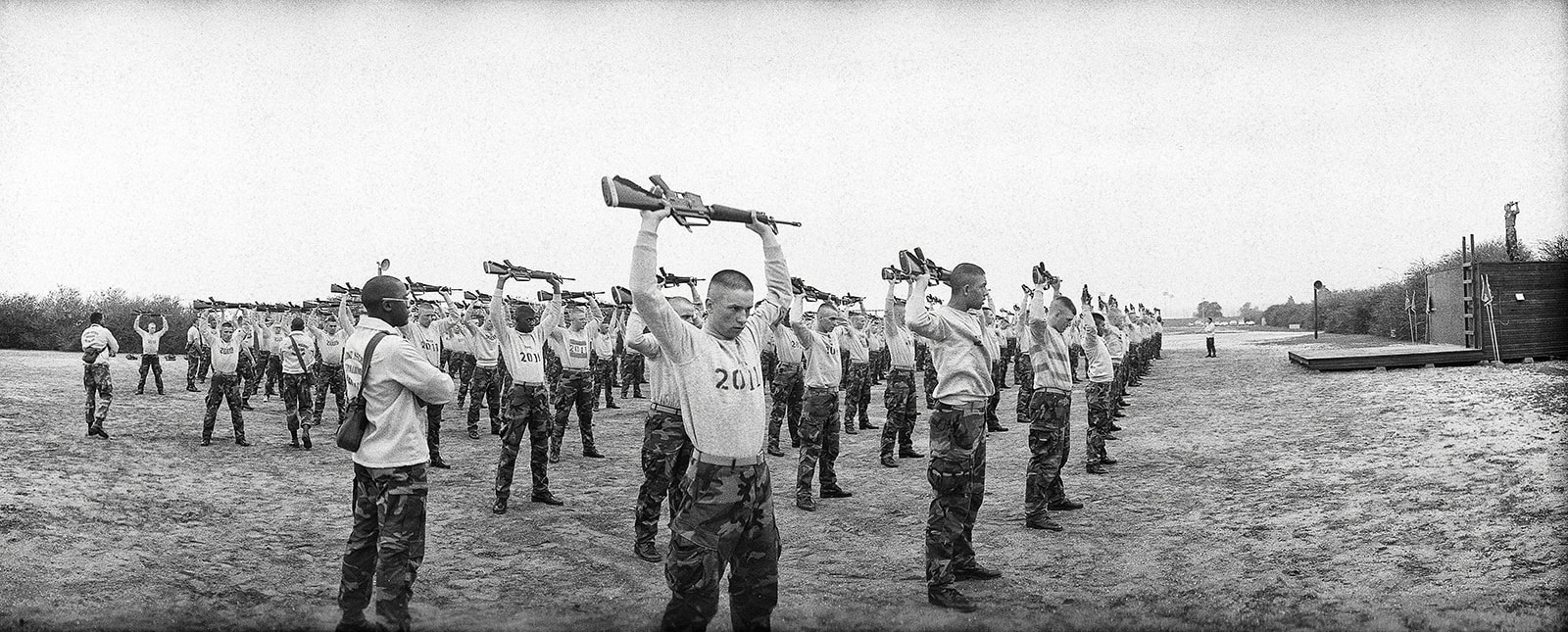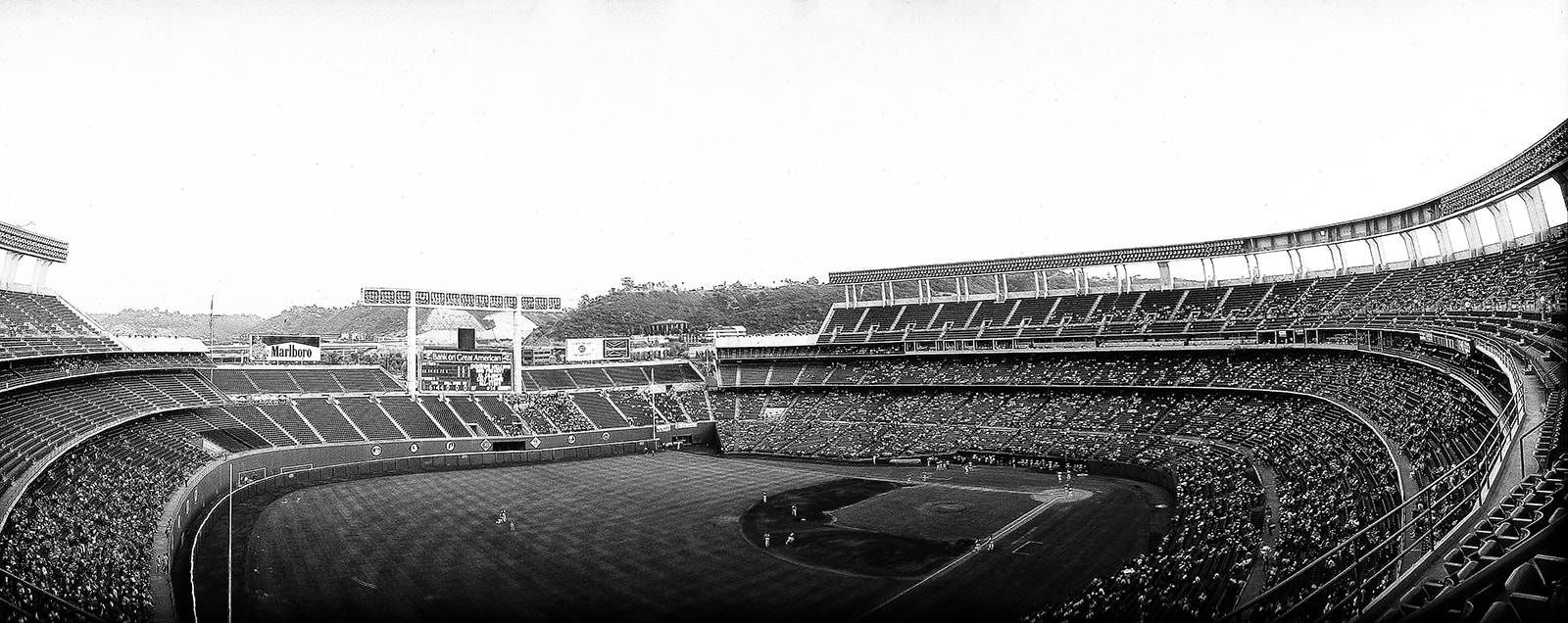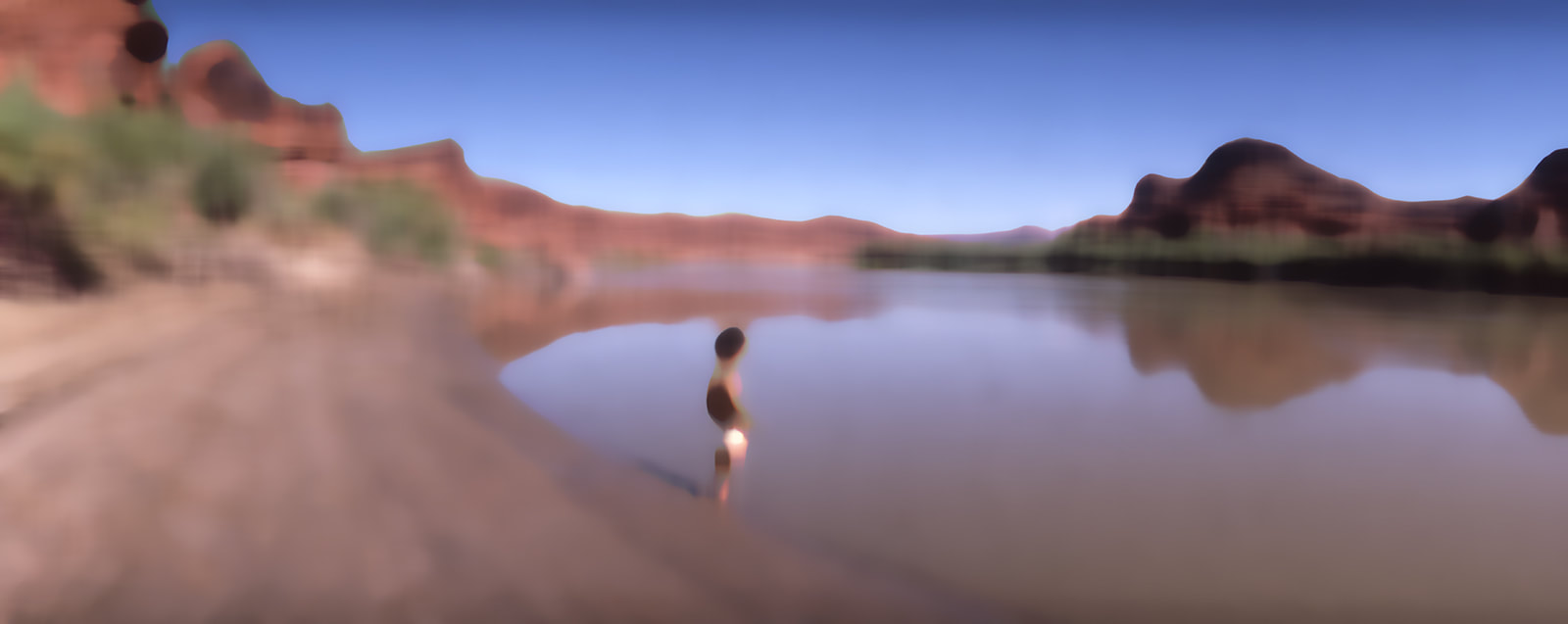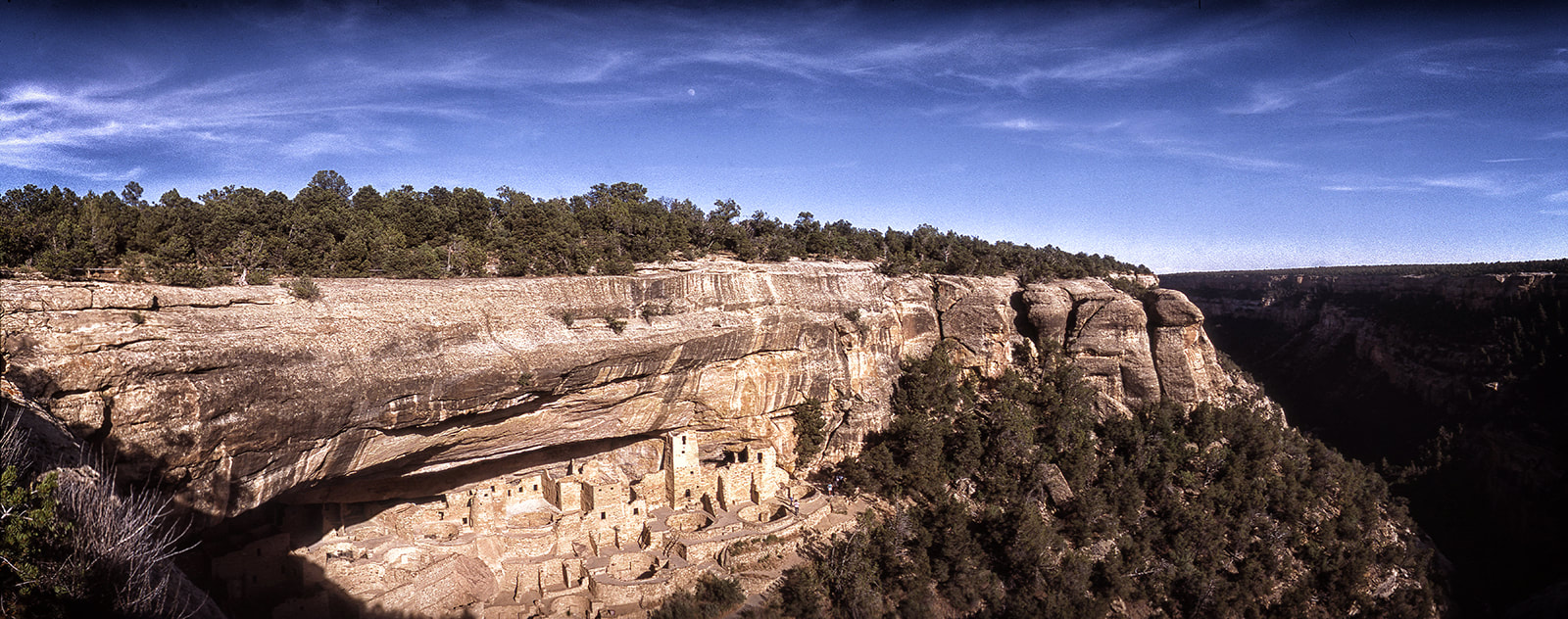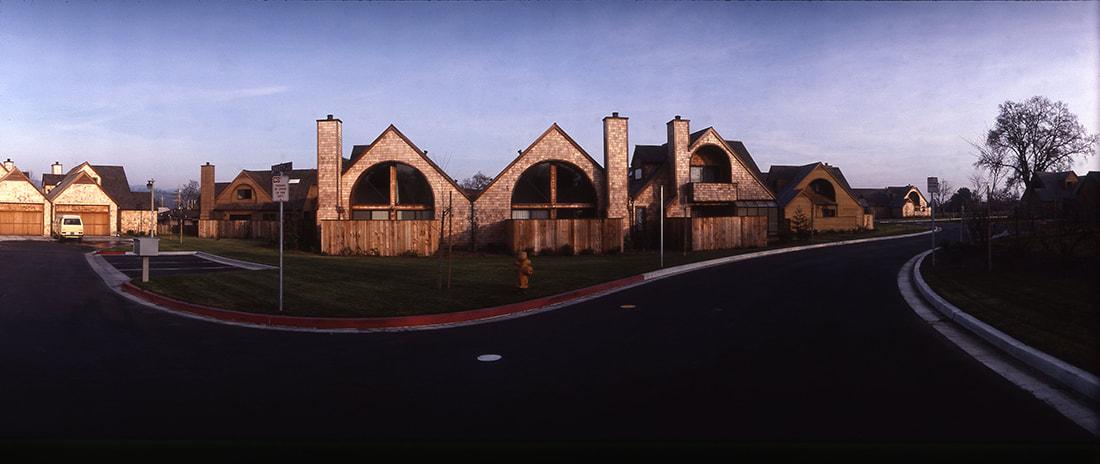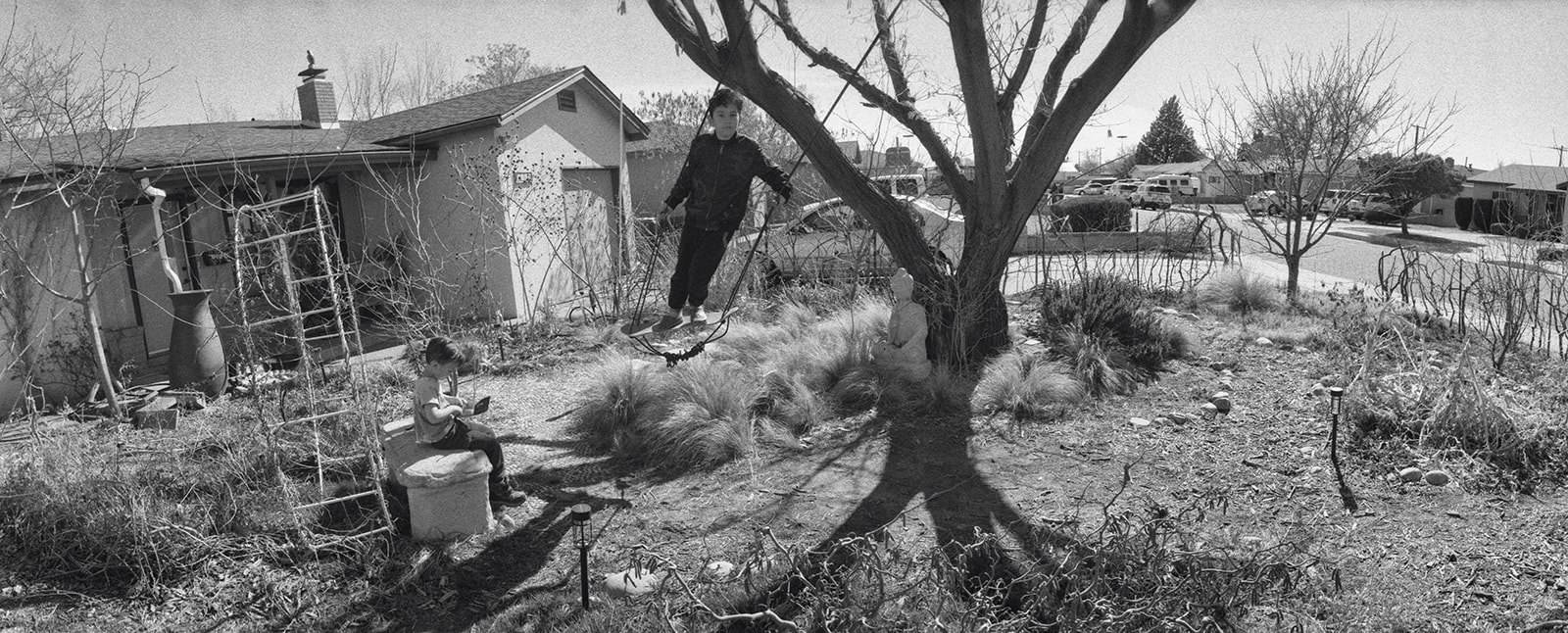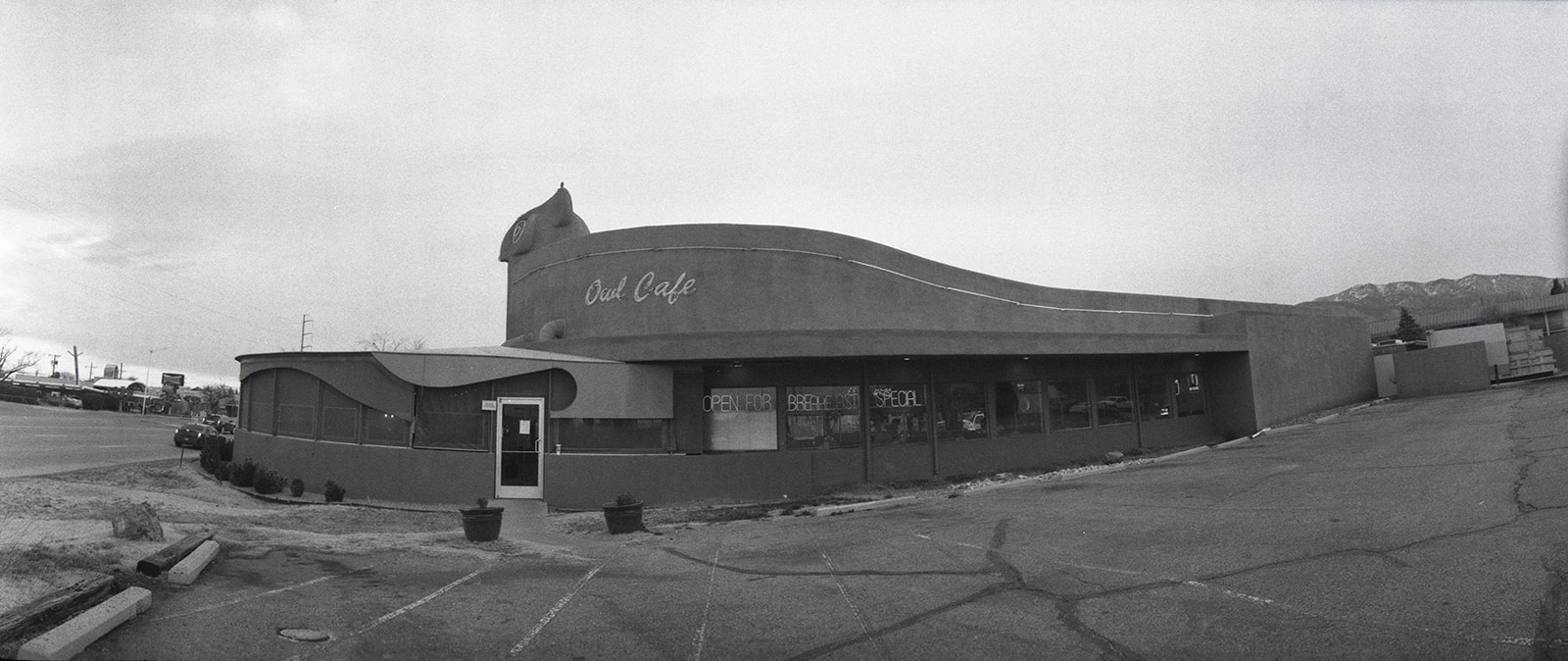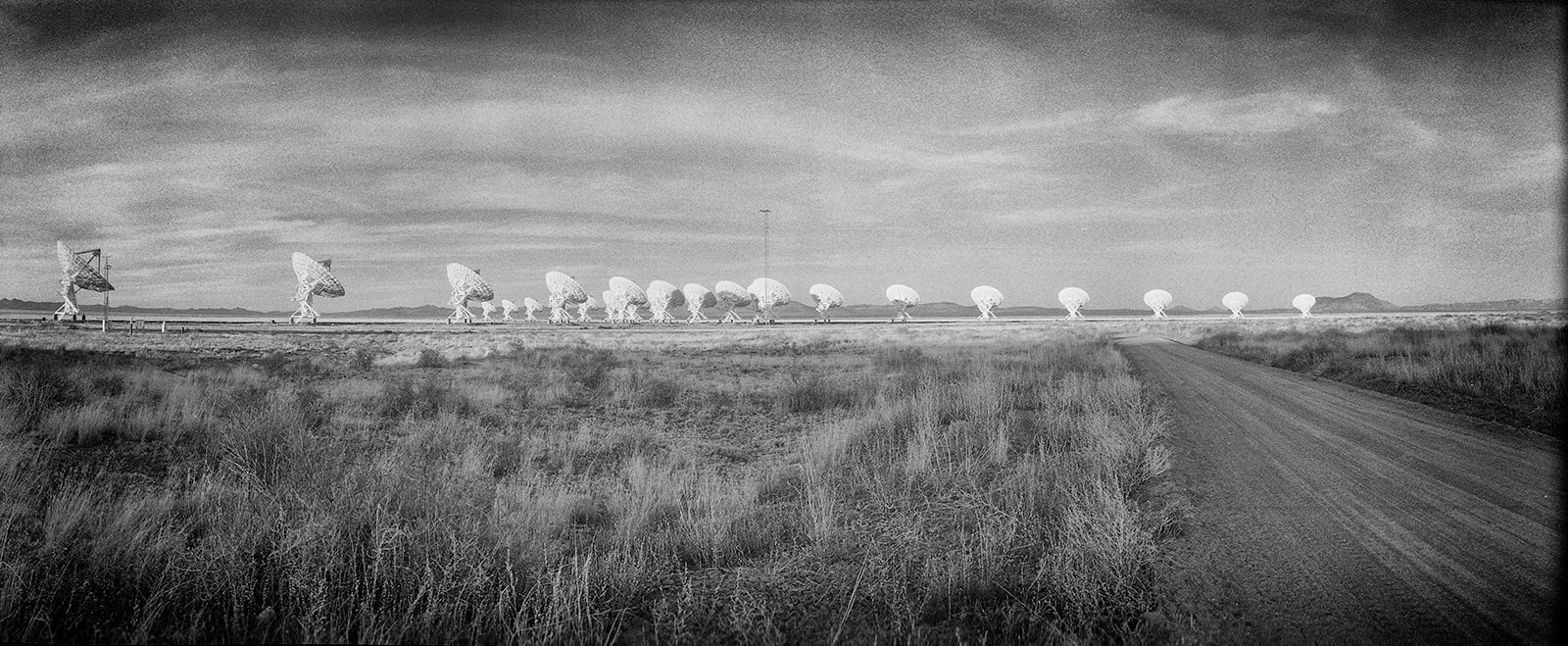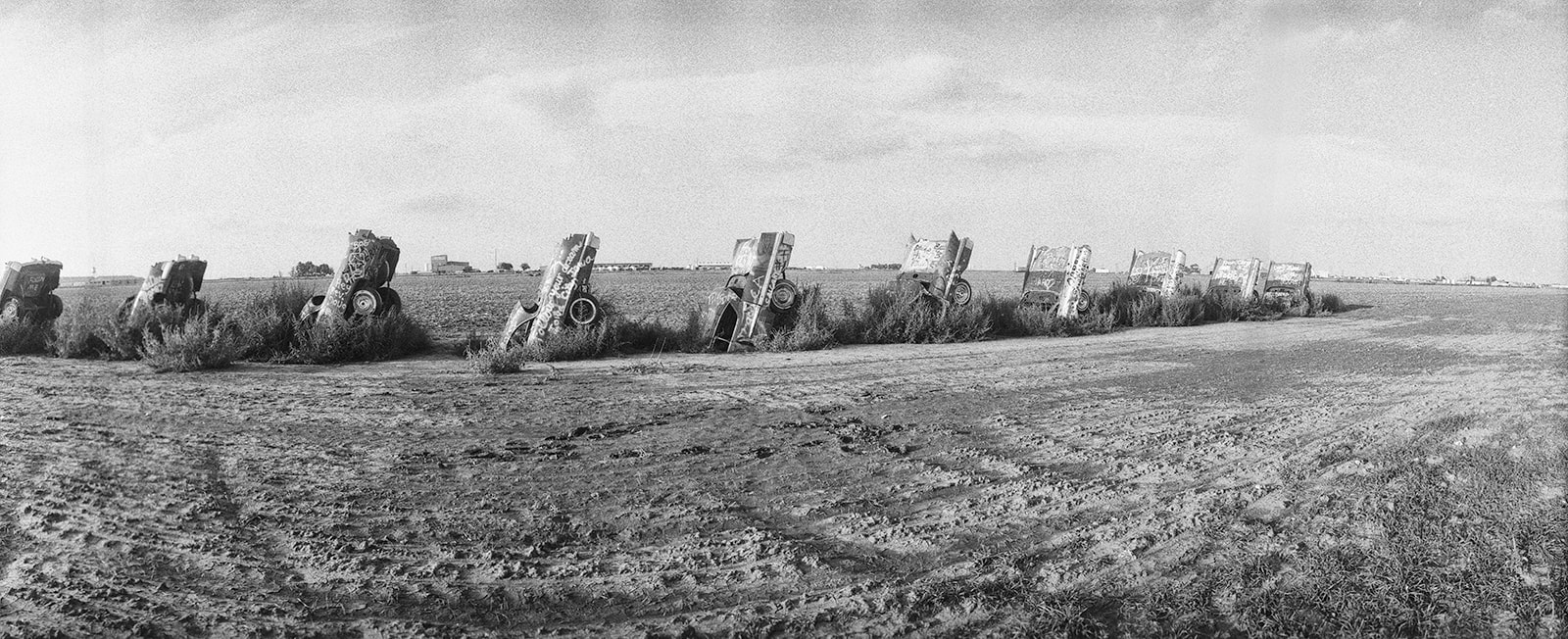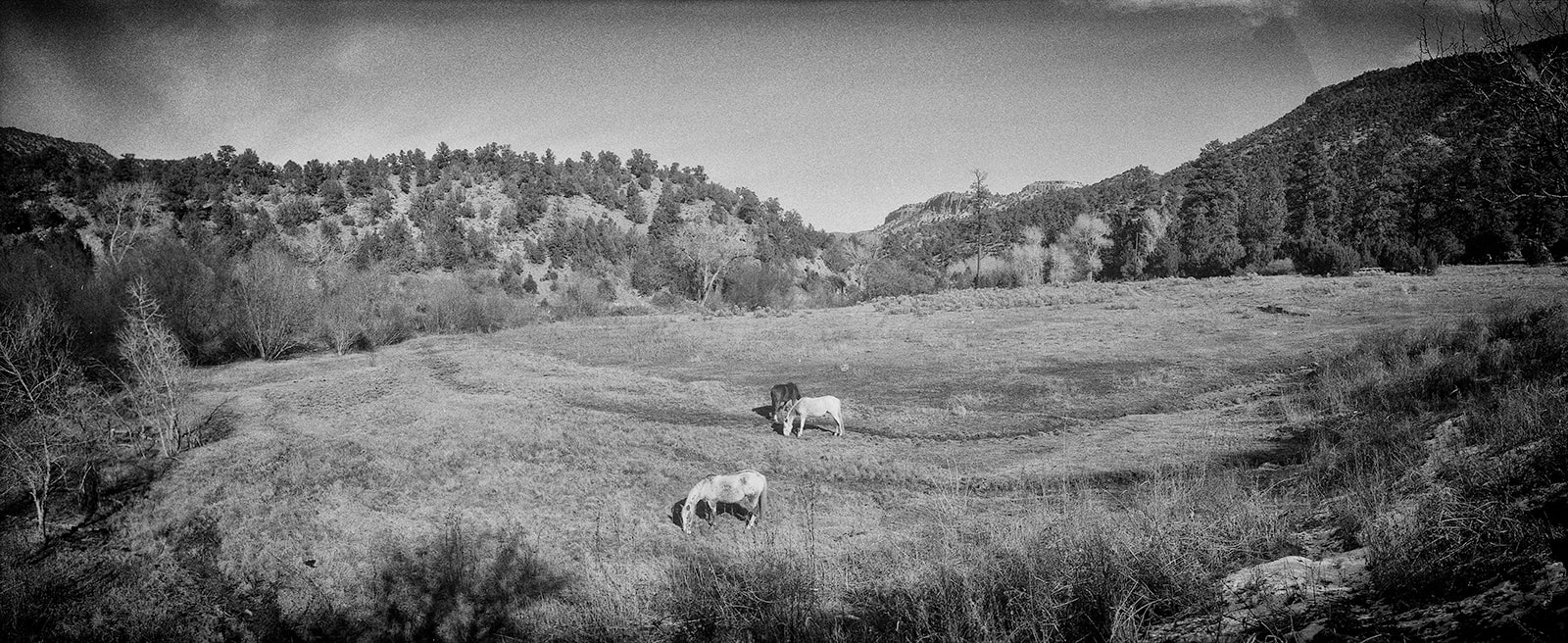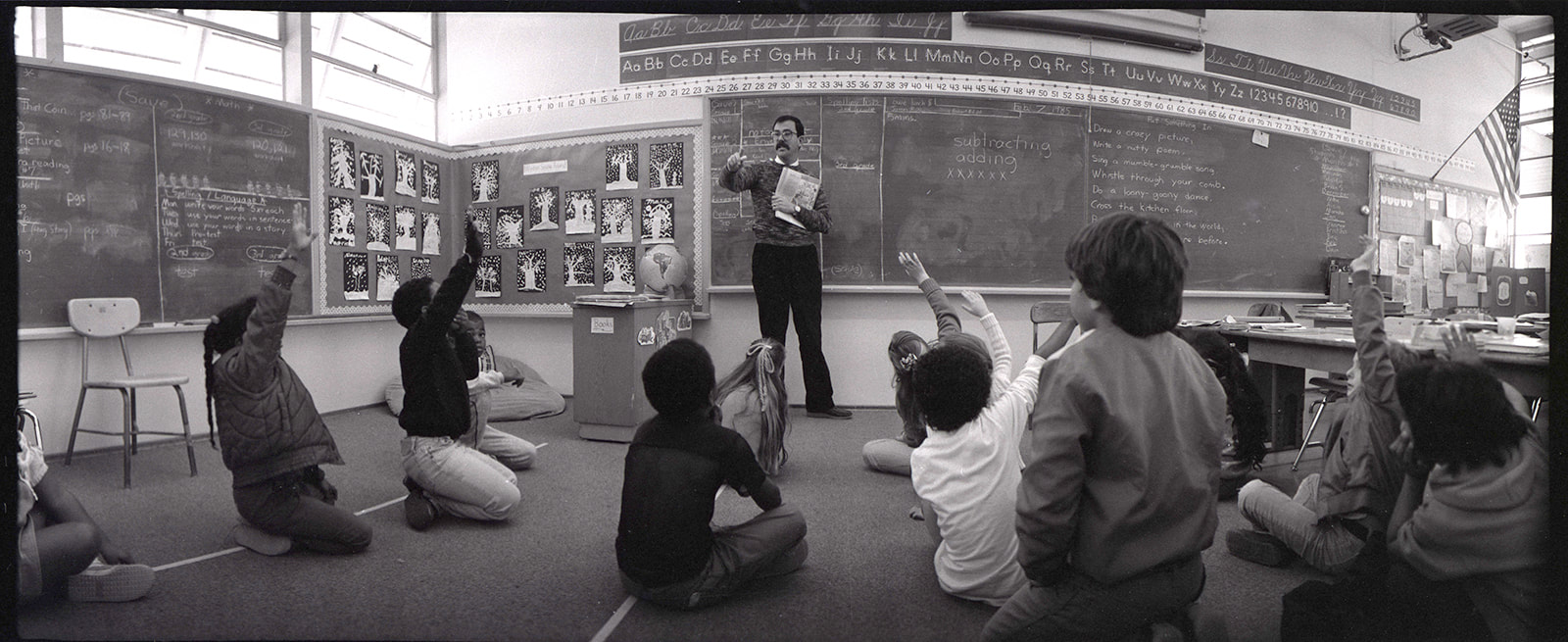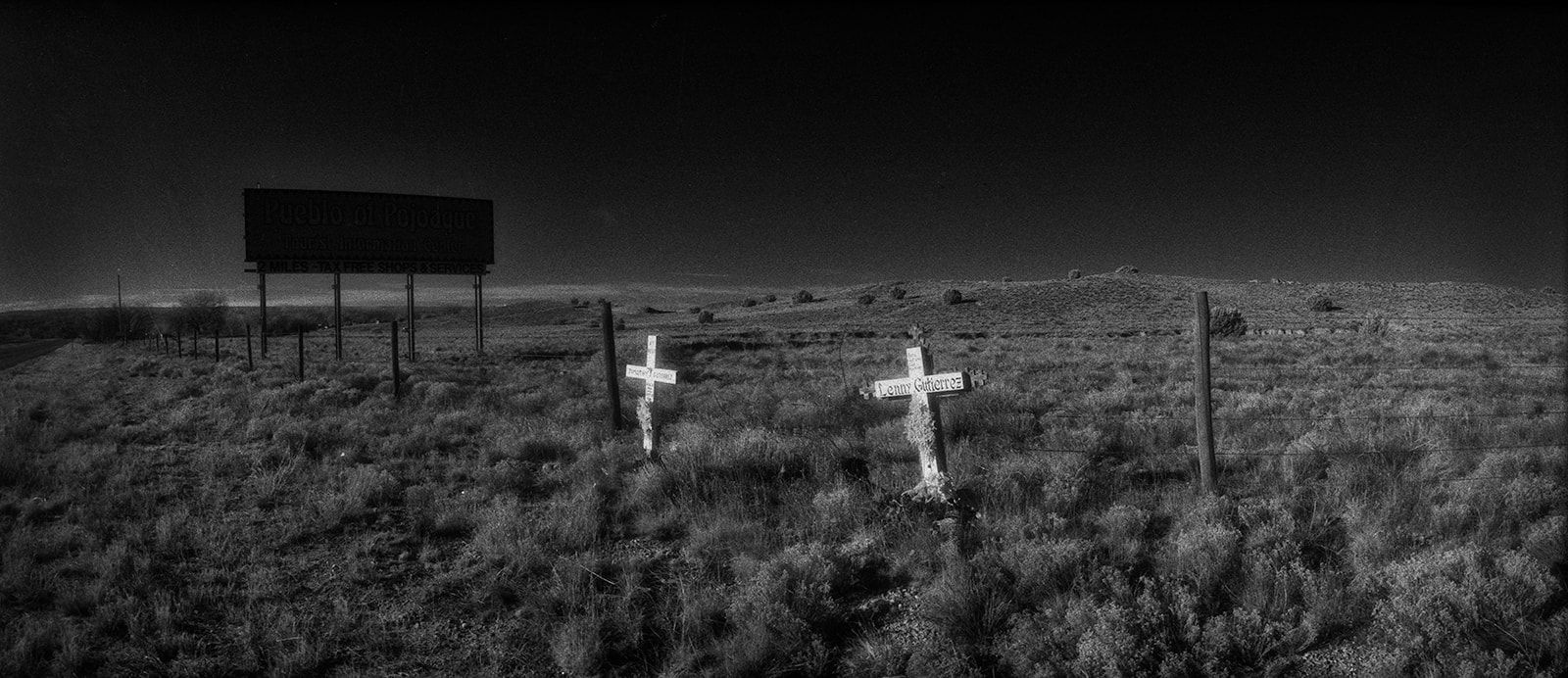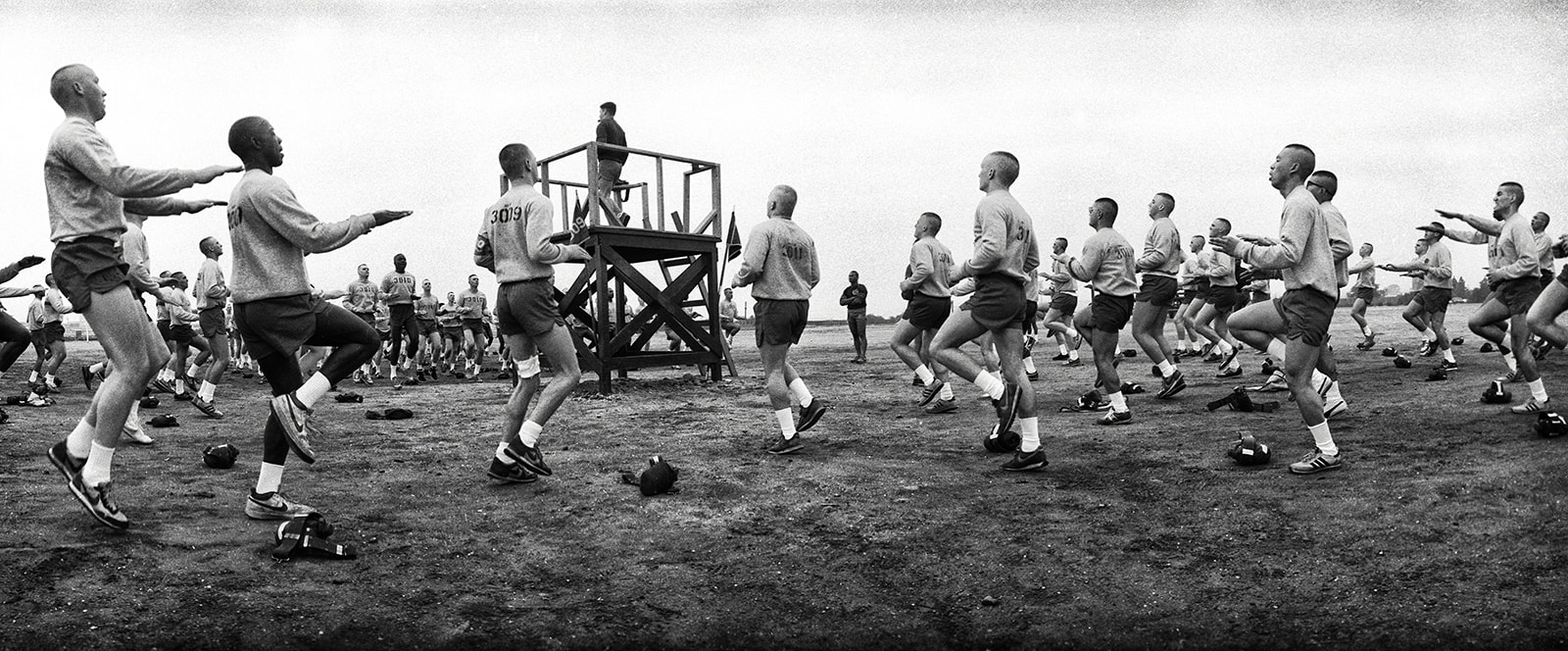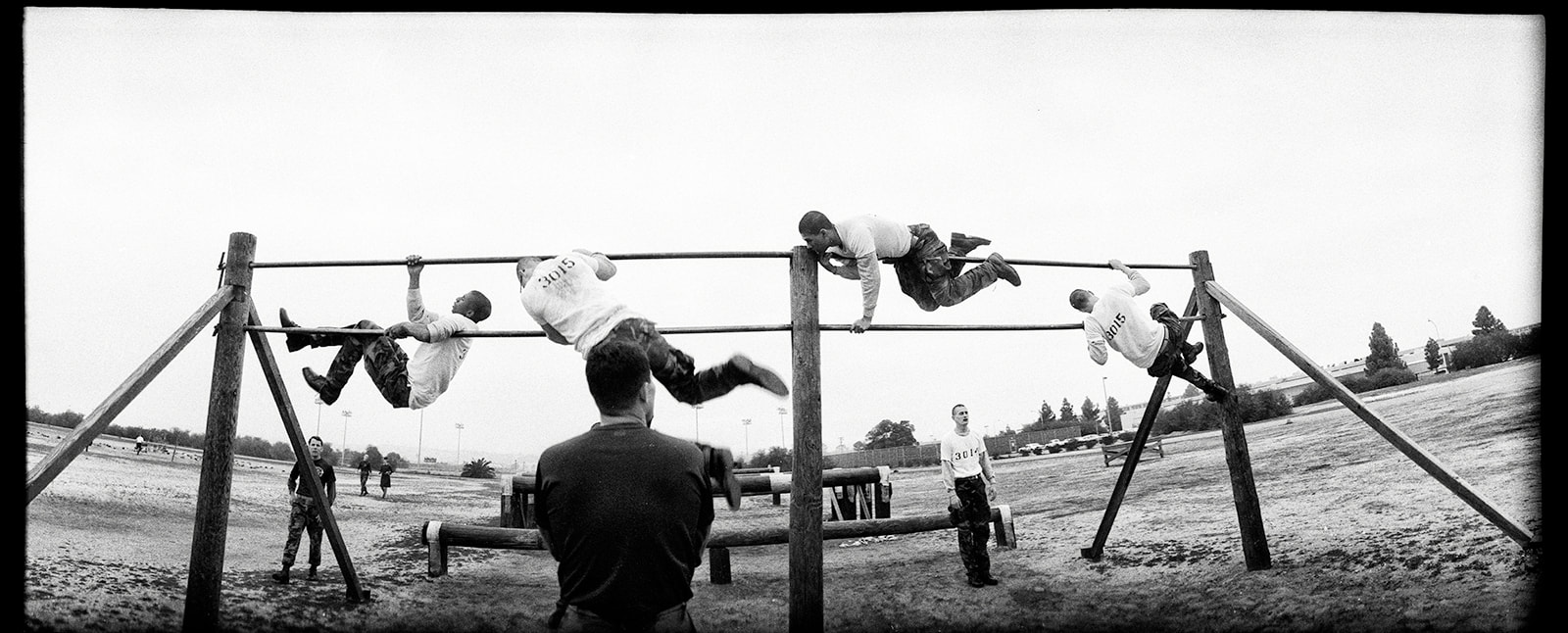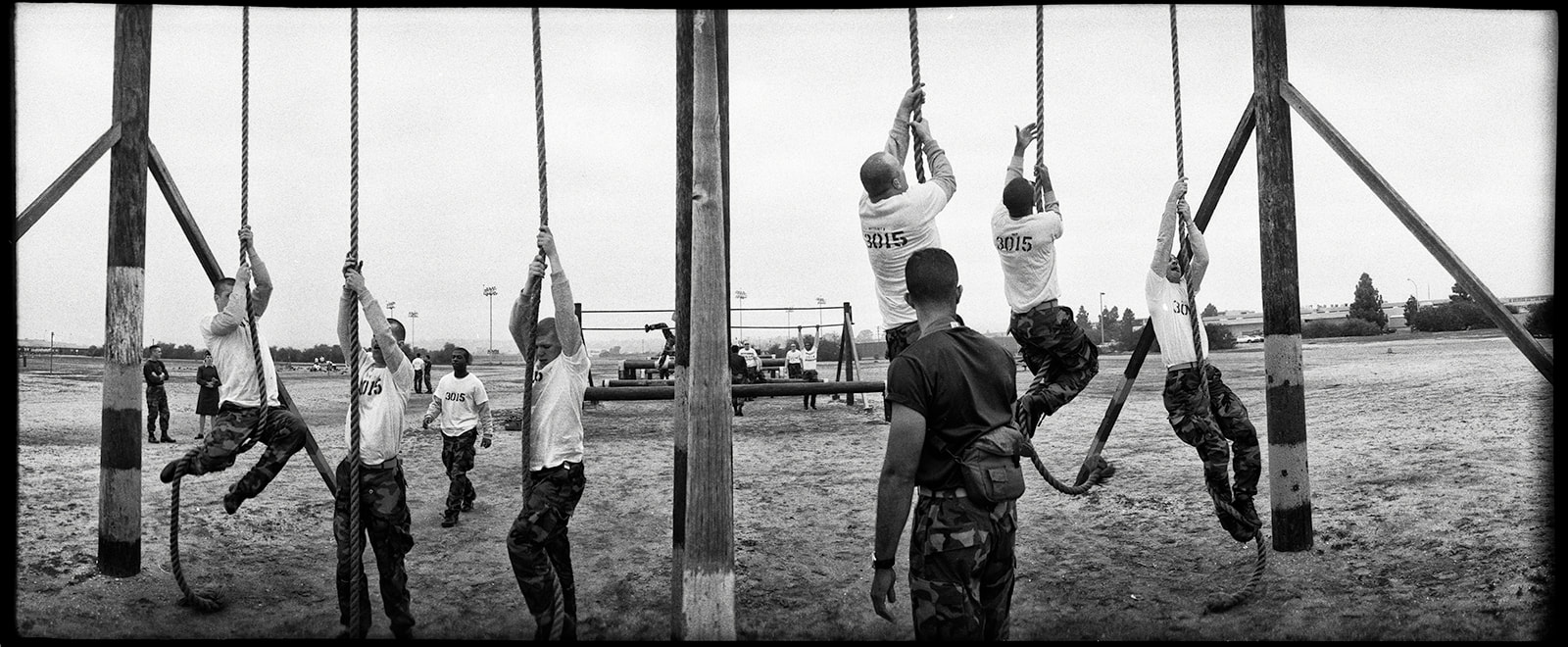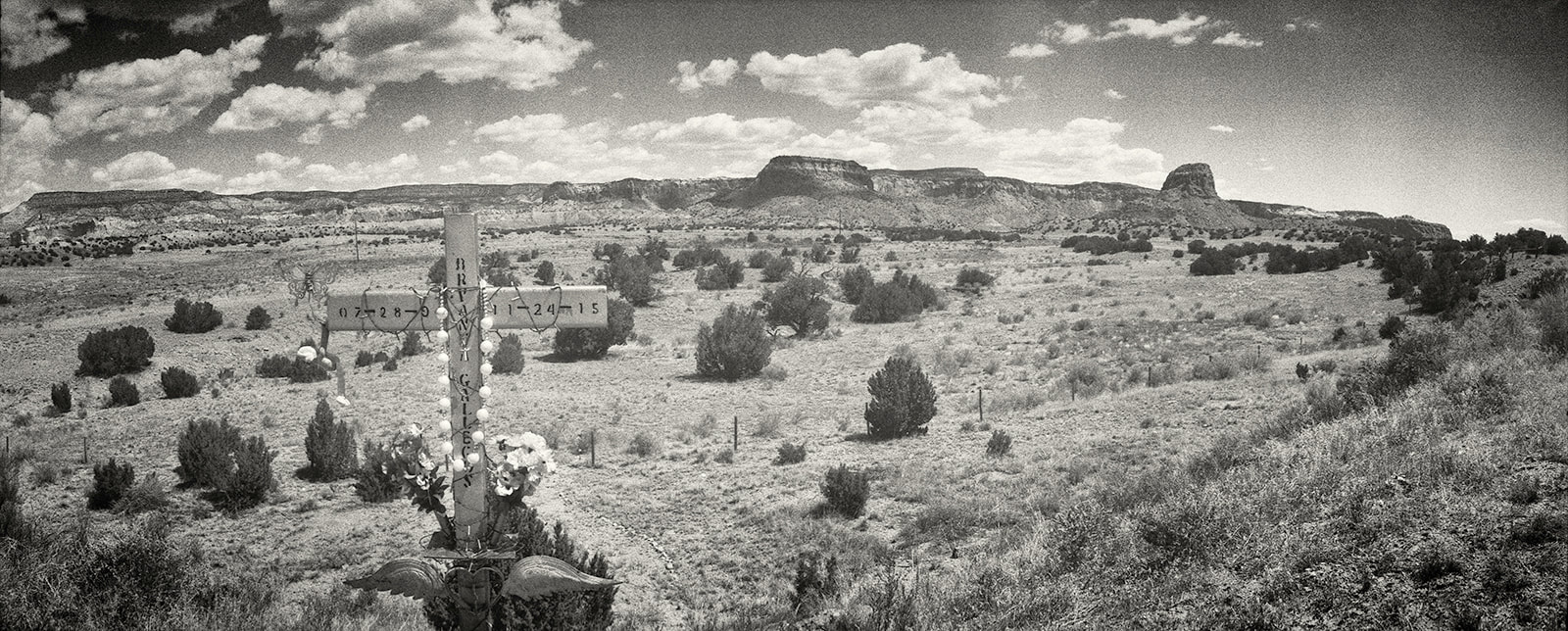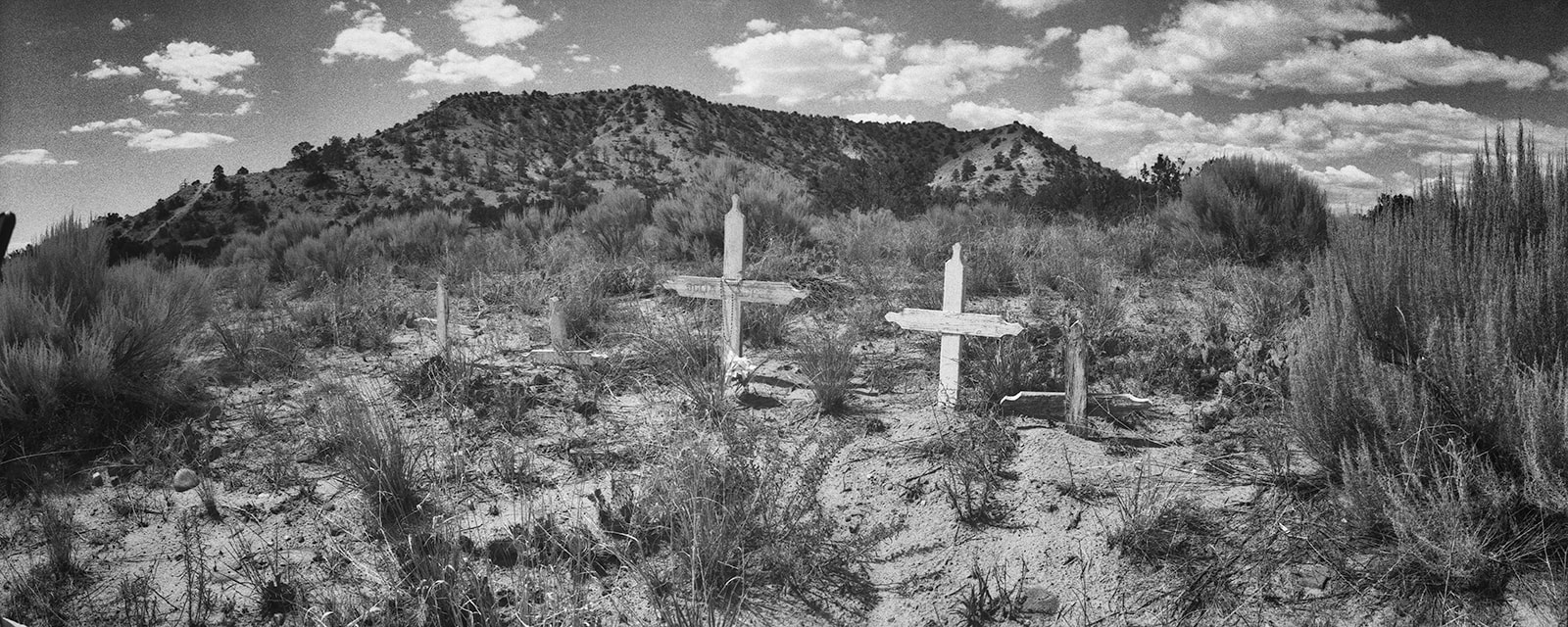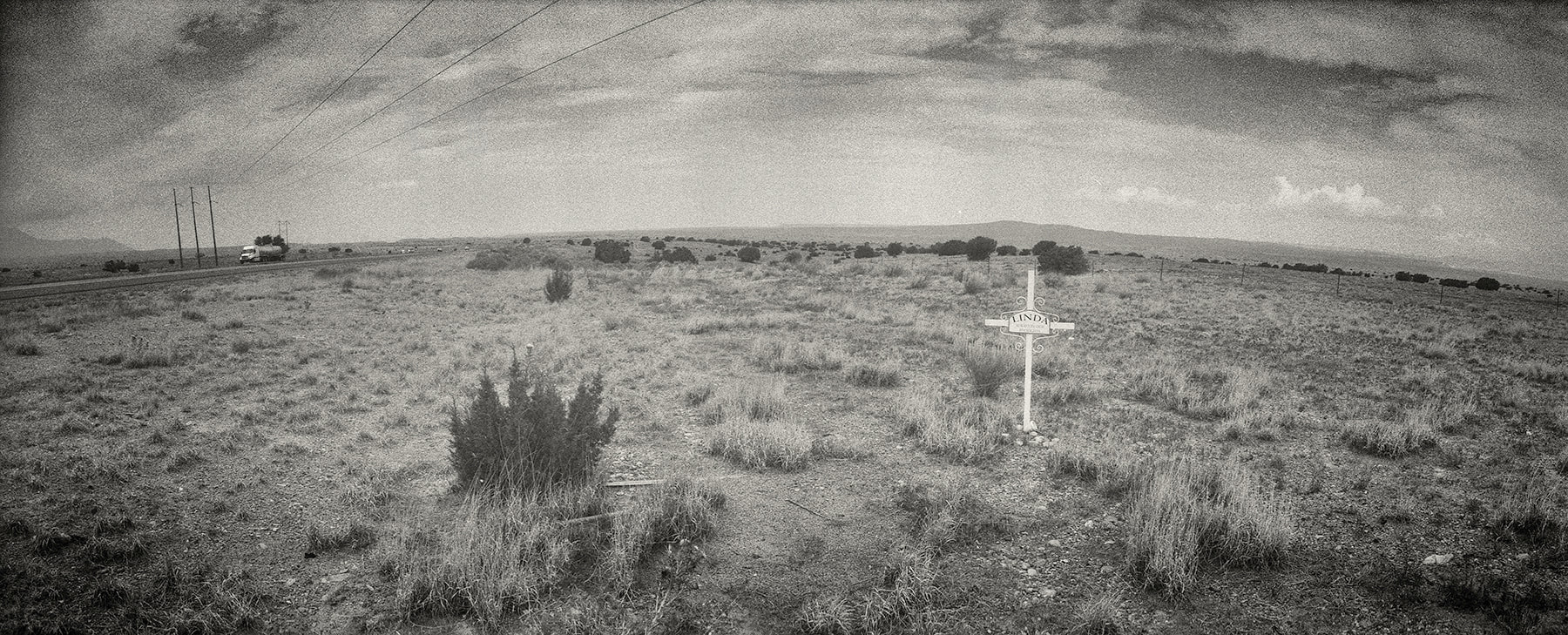Widelux Panoramic Photos
I’ve always enjoyed panoramic photos. Often I feel that they portray what the human eye sees more accurately than the normal photographic format.
In the early 1980s, when I lived in Oregon, I noticed an ad in Photo District News, a photo trade publication for a camera called a Widelux.
The Widelux is a rotating lens panoramic camera that, at least for the model I eventually had, used 35mm film.
It produces 24 by 58mm images on 35mm film, giving a 140 degree view. A typical 35mm image is 24 by 36mm in size
Wanting to try one out, and realizing the camera was imported solely by a New York company, I contacted Panon, the company that manufactured the Widelux in Japan and asked if they would be interested in having me market their camera in addition to the company on the east coast. Basically I was hoping to have them send me a free sample camera.
The free camera didn’t work out but they did offer to sell me one at wholesale to test.
After receiving the sample and trying it out, I started importing the cameras. It was an interesting learning experience: money exchange rates and transfers, dealing with customs, etc.
During that time I used the camera on a number of assignments. You needed to be careful with subject choice as distortion could creep in and ruin a composition. Keeping the horizon in the center of the frame was normally the thing to do. Straight lines were often bent to extremes, which could be distracting, or in some instances, add to the surrealistic feel of the photo.
In the early 1980s, when I lived in Oregon, I noticed an ad in Photo District News, a photo trade publication for a camera called a Widelux.
The Widelux is a rotating lens panoramic camera that, at least for the model I eventually had, used 35mm film.
It produces 24 by 58mm images on 35mm film, giving a 140 degree view. A typical 35mm image is 24 by 36mm in size
Wanting to try one out, and realizing the camera was imported solely by a New York company, I contacted Panon, the company that manufactured the Widelux in Japan and asked if they would be interested in having me market their camera in addition to the company on the east coast. Basically I was hoping to have them send me a free sample camera.
The free camera didn’t work out but they did offer to sell me one at wholesale to test.
After receiving the sample and trying it out, I started importing the cameras. It was an interesting learning experience: money exchange rates and transfers, dealing with customs, etc.
During that time I used the camera on a number of assignments. You needed to be careful with subject choice as distortion could creep in and ruin a composition. Keeping the horizon in the center of the frame was normally the thing to do. Straight lines were often bent to extremes, which could be distracting, or in some instances, add to the surrealistic feel of the photo.
Although most think of panoramas as being horizontal images, I did try it occasionally on a vertical subject.
A real master of the vertical panoramic is Horst Hamann. His book, “Paris Vertical,” is a wonderful introduction to this aspect of panoramic photos although it appears he didn’t use a rotating lens camera such as the Widelux but one like the panoramic Linhof.
I’ve recently started scanning some of my Widelux images and as I scan more, I’ll be adding them to this page.
The following are images I’ve scanned so far.
A real master of the vertical panoramic is Horst Hamann. His book, “Paris Vertical,” is a wonderful introduction to this aspect of panoramic photos although it appears he didn’t use a rotating lens camera such as the Widelux but one like the panoramic Linhof.
I’ve recently started scanning some of my Widelux images and as I scan more, I’ll be adding them to this page.
The following are images I’ve scanned so far.
Amish buggies and church Kalona, Iowa, Widelux F7
WIPP nuclear waste disposal containers, Highway 550, New Mexico, Widelux F6
Trees with light decorations, Abiquiu Inn, Abiquiu, Northern New Mexico, Widelux F6
A broken down bus that was eventually tagged with graffiti, Highway 550 between Bernalillo and Cuba, New Mexico, Widelux F6
An on-the-road, moving landscape on Highway 550 between Bernalillo and Cuba, New Mexico, Widelux F6
Mono Lake, California, Widelux F7
Older sister watches newborn sister's bath, Canones, Northern New Mexico, Widelux F7
Calf Canyon fire burn area outside Las Vegas, New Mexico. Widelux F6
Laundromat, Espanola, New Mexico. Widelux F6
Rural road, Colorado, Widelux F7
Santuario de Chimayo interior photographed with infrared film, Chimayo, New Mexico, Widelux F7
Playground, Santa Fe, New Mexico, taken with infrared film, Widelux F7
Marine Corps Recruit Depot, San Diego, California, Widelux F7
Near the Great Salt Lake, Utah, Widelux F7
Canyonlands, Utah, Widelux F7
MCRD - Marine Corps Recruit Depot, San Diego, California, Widelux F7
San Diego Padres baseball game, Widelux F7
Green River, Canyonlands. When I scanned this photo I realized it had a lot of dust and in trying to rid it of the dust I inadvertently turned it into an impressionistic photo of sorts, Widelux F7
Cliff Dwellings, Mesa Verde National Park, Colorado, Widelux F7
Napa Valley, California, housing development, Widelux F7
Playing on the Swurfer swing, Albuquerque, New Mexico, Widelux F6
Owl Cafe, Albuquerque, New Mexico, Widelux F6
Very Large Array Radio Telescopes, New Mexico, Widelux F7
Cadillac Ranch, West Texas near Amarillo, Widelux F7
Horses grazing, Canones, Northern New Mexico, Widelux F7
Elementary school class, San Diego, California, Widelux F7
Descansos (roadside crosses), Pojoaque, New Mexico (Pojoaque is located between Santa Fe and Espanola, New Mexico), Widelux F7
Marine Corps Recruit Depot (MCRD), San Diego, California (above and below), Widelux F7
Descanso (roadside cross) on Highway 84 near Ghost Ranch, Abiquiu, Northern New Mexico. Widelux F6
Descansos (roadside crosses) Highway 84, Medanales, Northern New Mexico, between Espanola and Abiquiu, New Mexico. Widelux F6
Descanso (roadside cross) I-25 between Santa Fe and Albuquerque, New Mexico. Widelux F6
To contact Bob Eckert for assignments, consultations or workshops, please email [email protected]
or use the contact form on the About page
or use the contact form on the About page
